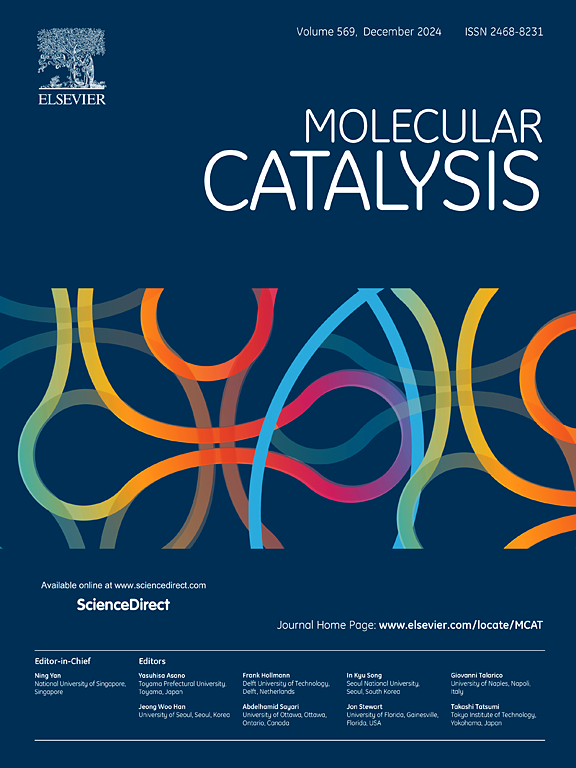Electrochemical C–H silylation of azauracils with hydrosilanes
IF 3.9
2区 化学
Q2 CHEMISTRY, PHYSICAL
引用次数: 0
Abstract
Polysubstituted azauracils represent highly important nitrogen-containing heterocyclic compounds that are widely found in biologically active molecules. Current synthetic methods primarily rely on expensive transition metals or often toxic photocatalysts to achieve C![]() H functionalization of azauracils, making it imperative to develop simpler and more practical synthetic approaches. Electroorganic synthesis offers an excellent alternative strategy. Herein, we disclose an electrochemical C
H functionalization of azauracils, making it imperative to develop simpler and more practical synthetic approaches. Electroorganic synthesis offers an excellent alternative strategy. Herein, we disclose an electrochemical C![]() H silylation method for the synthesis of various silicon-substituted azauracils using azauracils and hydrosilanes as starting materials. This transformation is conducted in an undivided cell, offering operational simplicity, excellent substrate compatibility, and scalability to gram-scale synthesis. Furthermore, this strategy enables the late-stage derivatization of valuable molecules. Mechanistic studies reveal that azauracils capture silicon radicals through three distinct pathways, ultimately generating diverse polysubstituted azauracil derivatives.
H silylation method for the synthesis of various silicon-substituted azauracils using azauracils and hydrosilanes as starting materials. This transformation is conducted in an undivided cell, offering operational simplicity, excellent substrate compatibility, and scalability to gram-scale synthesis. Furthermore, this strategy enables the late-stage derivatization of valuable molecules. Mechanistic studies reveal that azauracils capture silicon radicals through three distinct pathways, ultimately generating diverse polysubstituted azauracil derivatives.
氢硅烷与杜鹃花的电化学C-H硅化反应
多取代杜鹃酸是一类重要的含氮杂环化合物,广泛存在于生物活性分子中。目前的合成方法主要依赖于昂贵的过渡金属或通常有毒的光催化剂来实现氮脲的CH功能化,因此开发更简单、更实用的合成方法势在必行。电有机合成提供了一个很好的替代策略。在此,我们公开了一种电化学CH硅化方法,用于合成各种硅取代的氮化金脲和氢硅烷为原料。该转换在未分裂的细胞中进行,提供操作简单,出色的底物兼容性和克级合成的可扩展性。此外,这种策略使有价值分子的后期衍生化成为可能。机制研究表明,杜鹃花通过三种不同的途径捕获硅自由基,最终产生多种多取代的杜鹃花衍生物。
本文章由计算机程序翻译,如有差异,请以英文原文为准。
求助全文
约1分钟内获得全文
求助全文
来源期刊

Molecular Catalysis
Chemical Engineering-Process Chemistry and Technology
CiteScore
6.90
自引率
10.90%
发文量
700
审稿时长
40 days
期刊介绍:
Molecular Catalysis publishes full papers that are original, rigorous, and scholarly contributions examining the molecular and atomic aspects of catalytic activation and reaction mechanisms. The fields covered are:
Heterogeneous catalysis including immobilized molecular catalysts
Homogeneous catalysis including organocatalysis, organometallic catalysis and biocatalysis
Photo- and electrochemistry
Theoretical aspects of catalysis analyzed by computational methods
 求助内容:
求助内容: 应助结果提醒方式:
应助结果提醒方式:


